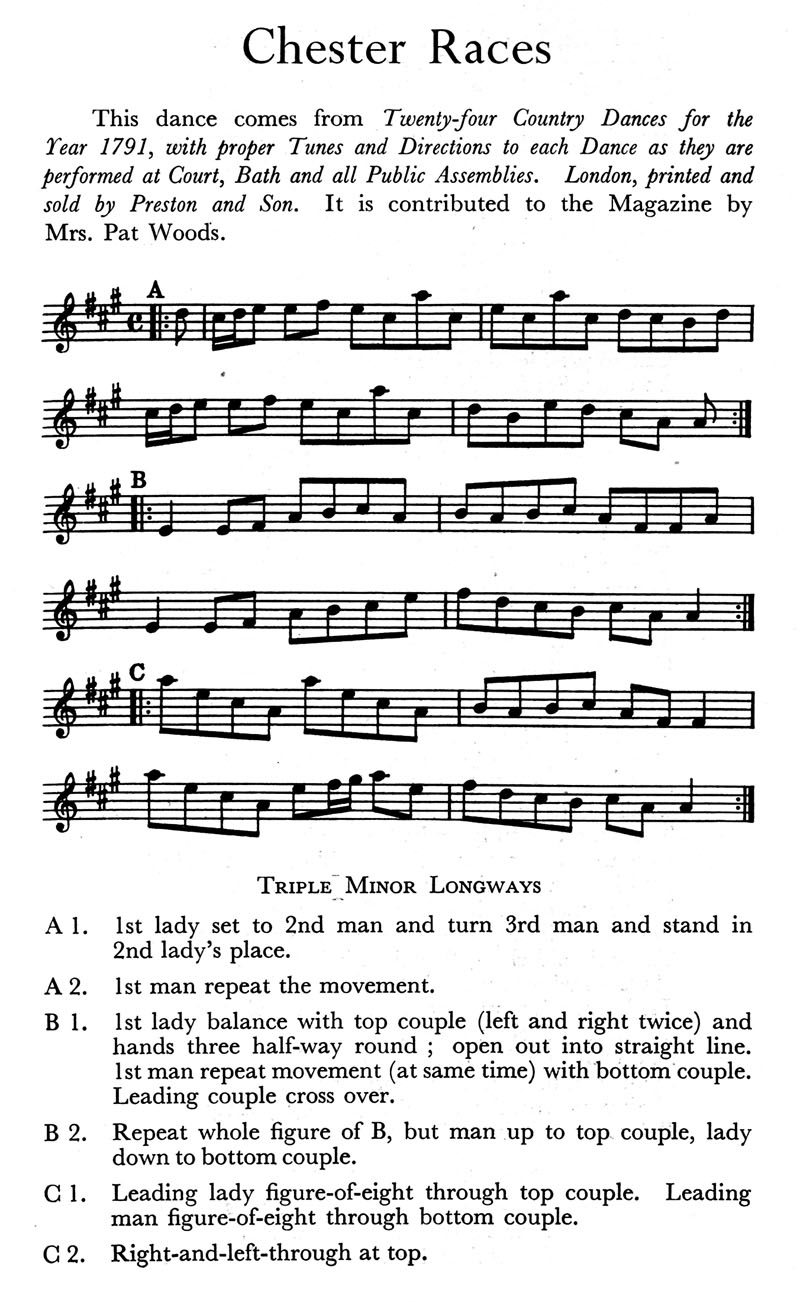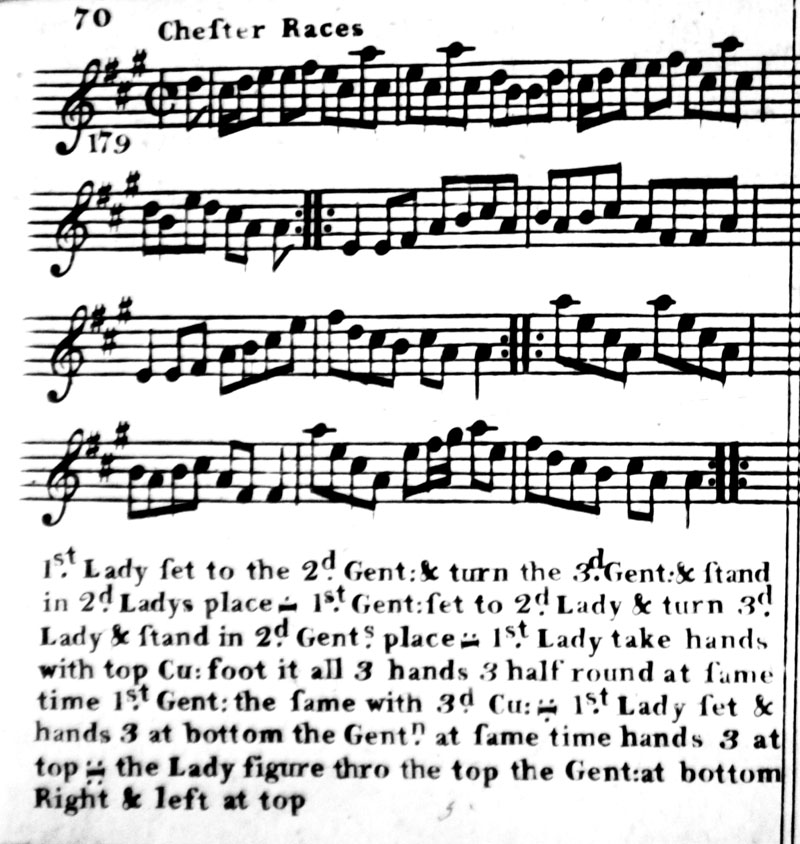Original page from English Dance & Song, September 1959

Back to Dance Index
| A1 | #1 Lady Set Twice to #2 Man, moving down the set - #2 Lady Move Up #1 Lady & #3 Man Two Hand Turn - #1 Lady finishes in #2 Lady’s Place |
| A2 | #1 Man the same |
| B1 | #1 Lady with Top Couple and #1 Man with Bottom Couple: Hold Hands in Circles of Three: Balance Twice; Circle Left Half Way; #1s pass each other by the Right Shoulder to the other end of the set |
| B2 | The same with #1 Lady at the Bottom, #1 Man at the Top - #1s pass by the Left Shoulder to the other end of the set |
| C1 | Full Figure Eights across the Ends: #1 Lady pass #2 Man by the Left Shoulder WHILE #1 Man passes Lady #3 by the Left Shoulder |
| C2 | Top Four: Four Changes of Rights and Lefts |
| Alternate C2 for a Three Couple Set: | |
| C2 | #1s Allemande Right 1/2, Pull By to their own side and Cast Down to the Bottom - #3s Move Up All: Partner Two Hand Turn |


I'd love to hear from you if you know anything more about this dance, its composer, its style, or its history.
Feedback is very welcome on any aspect of these dances or Web pages.
Please contact John Sweeney with your comments.
